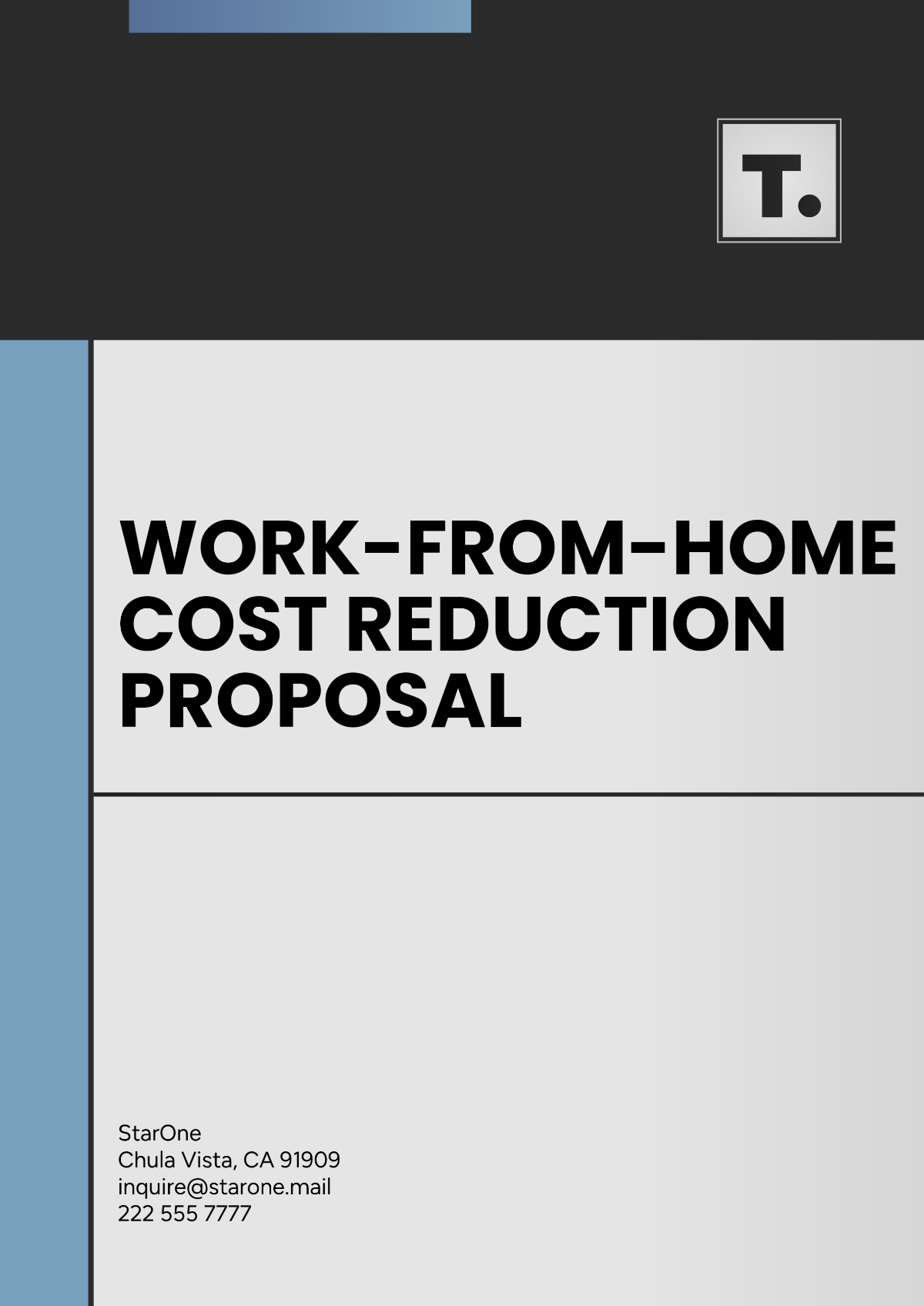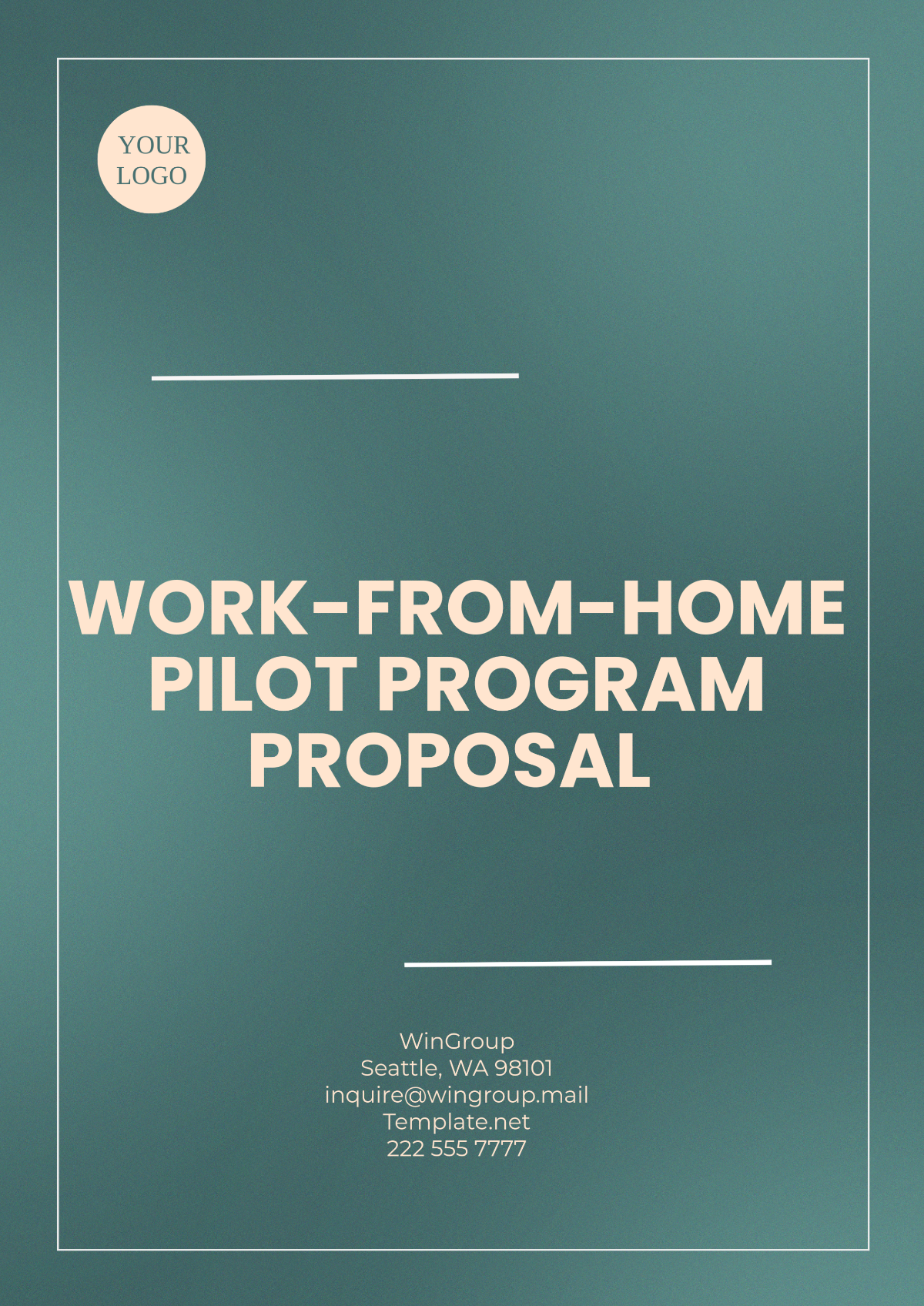Work-from-Home Feasibility Proposal
Date: August 16, 2050
1. Introduction
The purpose of this proposal is to assess the feasibility and outline the potential benefits, challenges, and necessary infrastructure for implementing a work-from-home (WFH) program at [Your Company Name]. This proposal aims to evaluate whether remote work options can be effectively integrated into our existing work environment to improve employee satisfaction, productivity, and overall operational efficiency.
2. Objectives
Assess feasibility: Determine the practicality of a work-from-home program for various departments and roles.
Increase employee satisfaction: Provide a flexible work environment that supports work-life balance.
Maintain productivity: Ensure that productivity is sustained or enhanced by remote work arrangements.
Reduce costs: Identify cost-saving opportunities related to office space, utilities, and commuting.
Ensure security: Implement policies and tools that ensure secure and compliant remote work practices.
3. Scope
This proposal covers the following key areas:
Departments considered for WFH: Human Resources, Marketing, IT Development, and Research & Development.
Duration of pilot program: From August 16, 2050, to November 16, 2050.
Technological requirements: Tools and software for communication, collaboration, and task management.
Security protocols: Measures to ensure data protection, privacy, and compliance.
Employee engagement: Strategies to maintain team cohesion, communication, and morale.
4. Feasibility Assessment
4.1. Eligibility of Roles
Assess whether specific roles are suitable for remote work based on the following factors:
Nature of work (e.g., customer service, data entry, management, etc.)
Availability of required technology and equipment
Flexibility in job responsibilities
Level of required collaboration with team members
A. Eligible Roles for WFH:
Human Resources Manager: Employee recruitment, onboarding, and policy management.
Senior Marketing Strategist: Campaign planning, market research, and data analysis.
Software Developer: Coding, system maintenance, and development tasks.
Research Analyst: Data collection, report generation, and analysis.
B. Non-Eligible Roles:
Operations Manager: Requires physical presence for logistics and supply chain management.
Client Relations Specialist: Needs to meet clients in person for consultations.
4.2. Technological Requirements
Hardware: Laptops (MacBook Pro), monitors (Dell UltraSharp), webcams (Logitech C920).
Software: Communication tools (Slack, Zoom, Microsoft Teams), file-sharing platforms (Google Drive, Dropbox), and project management tools (Asana, Monday.com).
Security Measures: VPN, encrypted communication tools (Signal), secure access management (multi-factor authentication via Okta).
Required Infrastructure:
VPN access for secure network connections
Cloud-based storage solutions (Google Cloud, AWS)
Company-issued devices for remote employees
5. Benefits of Work-from-Home Program
Improved work-life balance: Flexibility in working hours, reducing the need for long commutes.
Cost savings: Reduction in office space requirements, utilities, and commuting expenses.
Increased productivity: Potential for better focus and fewer distractions in a home environment.
Broader talent pool: Access to candidates from anywhere, beyond geographic limitations.
Environmental impact: Reduced carbon footprint due to fewer employees commuting.
6. Challenges & Mitigation Strategies
6.1. Communication & Collaboration
Challenge: Maintaining effective communication among remote teams.
Mitigation: Weekly team meetings via Zoom, daily check-ins on Slack, and use of project management tools for task visibility.
6.2. Data Security & Privacy
Challenge: Ensuring sensitive information is protected remotely.
Mitigation: Implementing encrypted communications, providing cybersecurity training to all remote workers, and enforcing strict security policies.
6.3. Monitoring & Performance
Challenge: Tracking employee performance remotely.
Mitigation: Set clear deliverables, use project management tools like Monday.com for tracking tasks, and provide bi-weekly performance reviews.
6.4. Employee Engagement & Isolation
Challenge: Maintaining team morale and preventing isolation.
Mitigation: Virtual team-building activities, online coffee chats, and fostering an open feedback culture through regular surveys.
7. Proposed Timeline
Phase | Description | Timeline |
|---|---|---|
Phase 1: Planning | Defining roles, technology, and policies | August 16, 2050 – August 30, 2050 |
Phase 2: Implementation | Setting up infrastructure, initial rollout | August 31, 2050 – September 15, 2050 |
Phase 3: Pilot Program | Testing and gathering feedback | September 16, 2050 – November 16, 2050 |
Phase 4: Evaluation | Assessing feasibility and adjusting strategy | November 17, 2050 – November 30, 2050 |
8. Budget Estimate
Item | Cost Estimate |
|---|---|
Hardware & Software | $35,000 |
Training & Setup | $7,500 |
Security Measures | $5,000 |
Miscellaneous | $2,000 |
Total | $49,500 |
9. Conclusion
The implementation of a work-from-home program at [Your Company Name] offers significant advantages in terms of employee satisfaction, productivity, and cost savings. After a detailed assessment, it is evident that this model is both feasible and beneficial for certain departments and roles. This proposal outlines the necessary steps to ensure the successful implementation of the program, addressing potential challenges with thoughtful strategies and safeguards.
Prepared by:
 [Your Name]
[Your Name]
Operations Director


























